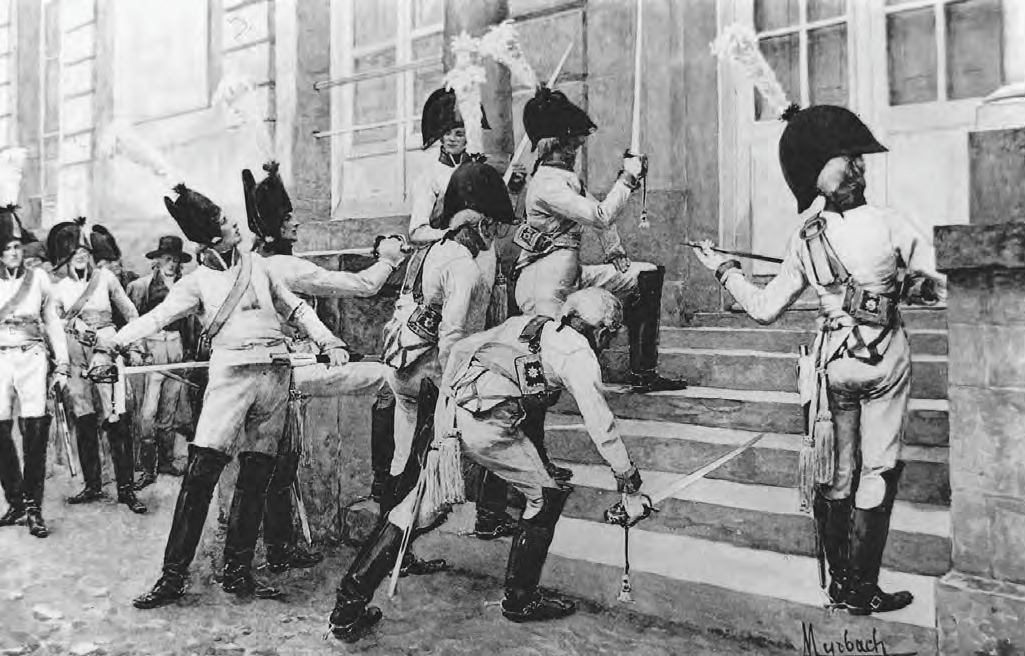|
Battle Of Golymin
The Battle of Golymin took place on 26 December 1806 during the Napoleonic Wars at Gołymin, Poland, between around 17,000 Russian Empire, Russian soldiers with 28 guns under Prince Dmitriy Vladimirovich Golitsyn, Golitsyn and 38,000 First French Empire, French soldiers under Joachim Murat, Marshal Murat. The Imperial Russia, Russian forces disengaged successfully from the superior First French Empire, French forces. The battle took place on the same day as the Battle of Pułtusk. Background Strategic situation After conquering Kingdom of Prussia, Prussia in the autumn of 1806, Napoleon I of France, Napoleon entered Poland to confront the Russian army, which had been preparing to support the Prussians until their sudden defeat. Crossing the river Vistula, the French advance corps took Warsaw on 28 November 1806. The Russian army was under the overall command of Field Marshal Mikhail Kamensky, but he was old and becoming infirm. The Russian First Army of some 55,000 to 68,000 ... [...More Info...] [...Related Items...] OR: [Wikipedia] [Google] [Baidu] |
War Of The Fourth Coalition
The Fourth Coalition fought against Napoleon's French Empire and were defeated in a war spanning 1806–1807. The main coalition partners were Prussia and Russia with Saxony, Sweden, and Great Britain also contributing. Excluding Prussia, some members of the coalition had previously been fighting France as part of the Third Coalition, and there was no intervening period of general peace. On 9 October 1806, Prussia declared war on France and joined a renewed coalition, fearing the rise in French power after the defeat of Austria and establishment of the French-sponsored Confederation of the Rhine in addition to having learned of French plans to cede Prussian-desired Hannover to Britain in exchange for peace. Prussia and Russia mobilized for a fresh campaign with Prussia massing troops in Saxony. Napoleon decisively defeated the Prussians in an expeditious campaign that culminated at the Battle of Jena–Auerstedt on 14 October 1806. French forces under Napoleon occupied Prus ... [...More Info...] [...Related Items...] OR: [Wikipedia] [Google] [Baidu] |
Capitulation Of Stettin
In the Capitulation of Stettin on 29–30 October 1806, Lieutenant General Friedrich Gisbert Wilhelm von Romberg surrendered the garrison and fortress to a much smaller French light cavalry brigade led by General of Brigade Antoine Lasalle. This event was one of a number of surrenders by demoralized Prussian soldiers to equal or inferior French forces after their disastrous defeat at the Battle of Jena-Auerstedt on 14 October. Stettin, now Szczecin, Poland, is a port city on the Oder River near the Baltic Sea, about northeast of Berlin. After Jena-Auerstedt, the broken Prussian armies crossed the Elbe River and fled to the northeast in an attempt to reach the east bank of the Oder. Following a two-week chase, Marshal Joachim Murat intercepted over 10,000 Prussians at the Battle of Prenzlau and bluffed them into surrendering on 28 October. The following day, Lasalle's and another French light cavalry brigade induced 4,200 more Prussians to lay down their weapons in the Cap ... [...More Info...] [...Related Items...] OR: [Wikipedia] [Google] [Baidu] |
Great Sortie Of Stralsund
The Great Sortie of Stralsund (Swedish: ''Stora utfallet från Stralsund'') was fought in the Franco-Swedish War (part of the War of the Fourth Coalition) on 1–3 April 1807, in Swedish Pomerania (present-day Germany). A French army under Édouard Mortier invaded Swedish Pomerania in early 1807 and initiated a blockade of the Swedish town of Stralsund, to secure the French rear from enemy attacks. After several smaller sorties and skirmishes around Stralsund, Mortier marched part of his army to support the ongoing Siege of Kolberg, leaving only a smaller force under Charles Louis Dieudonné Grandjean to keep the Swedes at check. The Swedish commander Hans Henric von Essen then commenced a great sortie to push the remaining French forces out of Swedish Pomerania. The French fought bravely on 1 April at Lüssow, Lüdershagen and Voigdehagen, but were eventually forced to withdraw; the Swedes captured Greifswald the next day, after a brief confrontation. The last day of fighti ... [...More Info...] [...Related Items...] OR: [Wikipedia] [Google] [Baidu] |
Siege Of Danzig (1807)
The siege of Danzig (19 March – 24 May 1807) was the French encirclement and capture of Danzig during the War of the Fourth Coalition. On 19 March 1807, around 27,000 French troops under Marshal Lefebvre besieged around 14,400 Prussian troops under Marshal Kalckreuth garrisoning the city of Danzig.Rothenberg G. E. The Art of Warfare in the Age of Napoleon. Indiana University Press, 1978. P. 219 Importance of Danzig Danzig held an important strategic position. As well as being an important heavily fortified port with 60,000 inhabitants at the mouth of the river Vistula, it was a direct threat to the French left, as it lay within Prussian lands but to the rear of the French army as it advanced eastward. It was also a potential dropping off point for allied troops which could threaten the French army by opening another front to their rear. Danzig was also difficult to attack, only being accessible from the west, while all other directions were covered either by the Vistula ... [...More Info...] [...Related Items...] OR: [Wikipedia] [Google] [Baidu] |


